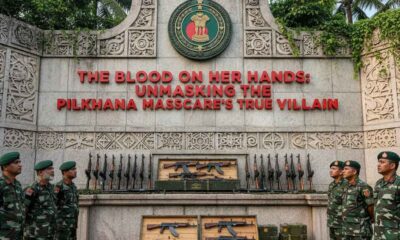Breaking
Gaza’s Infrastructure in Ruins as Israeli Offensive Marks One Year

Gaza City – A year of relentless Israeli airstrikes and ground operations in Gaza has left the territory devastated, with widespread destruction of essential infrastructure and a catastrophic humanitarian crisis. As conflict spills over into southern Lebanon, more than 41,600 Palestinians have been killed in Gaza since October 7, 2023, according to local health officials. The staggering death toll includes over 11,300 children and nearly 6,300 women, underscoring the deep human cost of ongoing war.
Worsening Humanitarian Crisis
the scale of destruction in Gaza is unprecedented. In a September interview with the Associated Press, UN Secretary-General António Guterres expressed shock at the level of devastation, stating, “I’ve never seen such a level of death and destruction as we are seeing in Gaza in the last few months.”
Humanitarian organizations report that 90% of Gaza’s population has been displaced at least once during the past year, with many forced to flee their homes multiple times. Families are crammed into smaller areas of land, lacking access to clean water, electricity, and health services. United Nations Office for Coordination of Humanitarian Affairs (OCHA) warns that the situation is nearing a total collapse, as the blockade on essential goods and services persists.
Infrastructure in Ruins
An analysis of satellite data by experts from Oregon State University and CUNY Graduate Center found that nearly 60% of buildings in Gaza have been damaged or destroyed since the start of the war. Approximately 227,591 housing units have been impacted, and 68% of Gaza’s road network has been rendered unusable. Essential facilities, including hospitals and schools, have not been spared from destruction.
As of late September, only 17 of Gaza’s 36 hospitals remain partially functional, with severe shortages of fuel, medical supplies, and clean water. Oxfam, a leading humanitarian organization, reported that the situation is rapidly worsening, with food insecurity on the rise as new customs regulations complicate the delivery of humanitarian aid.
Warfare Expands to Souren Lebanon
war, which initially centered on Gaza, has now expanded to southern Lebanon, where Israeli airstrikes have targeted Hezbollah strongholds. Escalation in Lebanon coincides with Israel’s continued bombardment of Gaza, where it claims to be targeting Hamas command centers located in civilian areas, including hospitals and schools. Independent investigations into some of these claims have questioned the validity of evidence, further fueling international concerns over the impact on civilians.
Infrastructure Destruction Intensifies
While the rate of destruction had slowed earlier this year in parts of Gaza, recent satellite analysis reveals that an estimated 70% of buildings in northern Gaza have been damaged or destroyed. However, the focus of destruction is now shifting to southern Gaza, particularly in the city of Rafah, where ongoing Israeli airstrikes continue to destroy infrastructure vital to daily life.
Israel’s Offensive and Civilian Casualties
Israel’s military offensive was triggered by the Hamas attack on October 7, 2023, in which militants killed more than 1,200 Israelis, including 282 women and 36 children. In the wake of the attack, Israeli forces launched a massive military campaign across Gaza, resulting in widespread devastation. Additionally, 251 Israelis were taken hostage, and around 100 remain captive in Gaza, according to the latest reports.
Israeli authorities have continued to defend its military actions, stating that y is targeting Hamas militants hiding in civilian areas. However, the scale of destruction and civilian casualties has drawn widespread international condemnation, with many calling for an immediate ceasefire to allow for humanitarian aid to reach those in need.
Global Calls for Ceasefire
As the conflict enters its second year, global protests against violence in Gaza have intensified, with demonstrations held in major cities around the world. The international community is increasingly demanding a halt to hostilities and the establishment of safe humanitarian corridors to deliver aid to Gaza’s beleaguered population.
United Nations and or humanitarian organizations are pushing for a diplomatic solution, warning that without immediate intervention, the humanitarian crisis in Gaza will continue to worsen, putting millions of lives at further risk.










